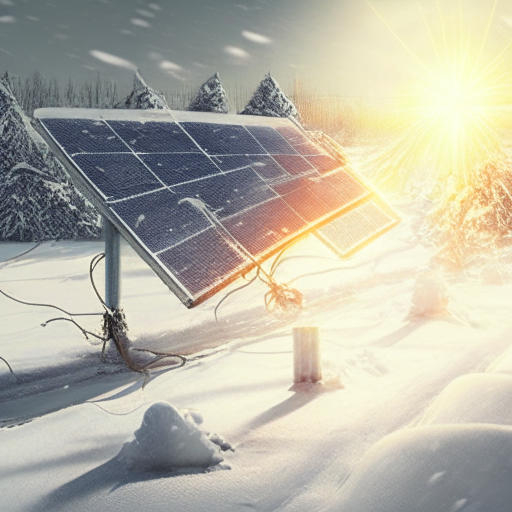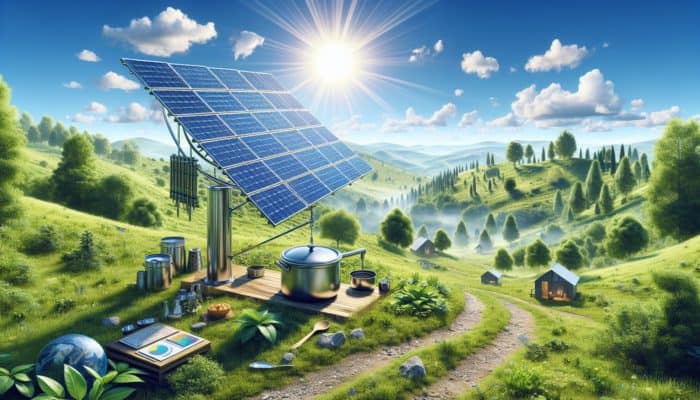Unlock the Power of Solar Energy in Frigid Conditions for Survivalists
As an avid survivalist, you recognize the critical need for achieving self-sufficiency, particularly when navigating the obstacles presented by harsh winter weather. A key challenge you may face is optimizing the use of renewable energy sources in freezing temperatures. However, there's no reason to panic! This article will explore the remarkable potential of solar power even in the coldest climates. We are eager to share actionable strategies that will empower you to harness solar energy effectively, even during the harshest winter conditions, by taking a proactive and informed approach to your energy requirements.

A common misconception is that solar electricity is only effective in warm and sunny environments. Thanks to significant advancements in technology, it is entirely possible to capture solar energy even in colder regions. Let’s delve into various techniques that empower solar power systems to excel in extreme cold, and how you can leverage this sustainable, eco-friendly energy source to greatly improve your lifestyle and survival tactics.
It’s essential to grasp that solar panels derive energy from sunlight rather than warmth alone. While colder temperatures can affect the efficiency of solar panels, they do not render them ineffective during winter months. By employing strategic planning and innovative techniques, you can enhance your solar power system’s performance, ensuring optimal functionality even in the chilliest environments. Understanding how solar panels operate under varying temperatures will enable you to make informed choices that effectively fulfill your energy needs.
One crucial aspect of optimizing solar electricity in cold climates is the angle and orientation of your solar panels. Proper alignment can dramatically boost the amount of sunlight your panels collect throughout the day. In winter, the sun’s path is lower in the sky, making it imperative to tilt your panels at a steeper angle. This adjustment allows for maximum sunlight capture, thereby improving their efficiency. Furthermore, positioning the panels toward the south can enhance their sunlight absorption capabilities, especially beneficial during the shorter days of winter.
Snow accumulation is another significant obstacle in colder regions that can impede the effectiveness of your solar panels. A heavy layer of snow can significantly reduce electricity output. Nevertheless, by proactively addressing this issue, you can uncover effective solutions. Consider installing snow barriers or heating elements on your solar panels to prevent snow buildup. These enhancements not only facilitate the melting of existing snow but also ensure continuous energy production, even during snowstorms. Regularly clearing snow manually is also an effective maintenance strategy to keep your panels operating optimally and free from obstructions.
Incorporating battery storage systems is a forward-thinking strategy that can greatly improve solar power efficiency in cold conditions. These batteries store excess energy generated during daylight hours for use when sunlight is scarce or temperatures plummet. The significance of battery storage becomes particularly apparent in freezing conditions, as it guarantees a reliable electricity supply when you need it most. By investing in a high-quality battery system, you can maintain your energy independence and be well-prepared for unexpected challenges that may arise during severe weather events.
Selecting the right type of solar panels is essential for optimizing your solar energy system’s efficiency in cold climates. Certain panels are specifically engineered to perform better in lower temperatures and may feature enhanced insulation or specialized materials to minimize the impact of frost and ice on their performance. By thoughtfully choosing the panel types that best suit your cold environment, you can maximize energy production and ensure that your solar power system effectively meets your energy demands.
Beyond the technical considerations, having your solar power system installed by professionals experienced in cold climate conditions is crucial. Skilled installers can offer best practices for installation, ongoing maintenance, and troubleshooting, providing invaluable insights into optimizing your system. Their expertise will ensure that your solar setup operates at peak efficiency, even under the most challenging winter circumstances, ultimately enhancing the reliability of your energy source.
Maintaining a proactive and prepared mindset is vital in survival scenarios. While solar power can serve as a dependable energy source in cold climates, having backup generators or alternative energy solutions is essential. These additional measures will act as a safety net in case of extended periods of low sunlight or unexpected system failures. By integrating solar power with other renewable energy sources, you can further bolster your energy independence and resilience, ensuring that you are well-equipped to handle any weather-related challenges that may arise.
Solar energy is not confined to warm and sunny areas; it holds immense potential even in the coldest climates when approached with strategic planning and technical advancements. By adjusting your panel angles, tackling snow accumulation, incorporating battery storage, selecting suitable solar panels, relying on expert installation, and having contingency plans in place, you can unlock the full potential of solar energy in extreme cold. Embrace renewable energy with confidence and resourcefulness, securing your survival and sustainability in any climate.
The post Solar Energy in Extreme Cold: Unlocking Its Full Potential appeared first on Survival Bite.
The Article Solar Energy’s Full Potential in Extreme Cold Conditions Was Found On https://limitsofstrategy.com
The Article Unlocking Solar Energy’s Potential in Extreme Cold First Appeared ON
: https://ad4sc.com













Clyde Vaughn
This topic strikes a chord with me, especially as someone who has tried to integrate renewable energy solutions into my own survival strategies. The idea that solar energy can still be harnessed effectively in winter conditions often surprises many.